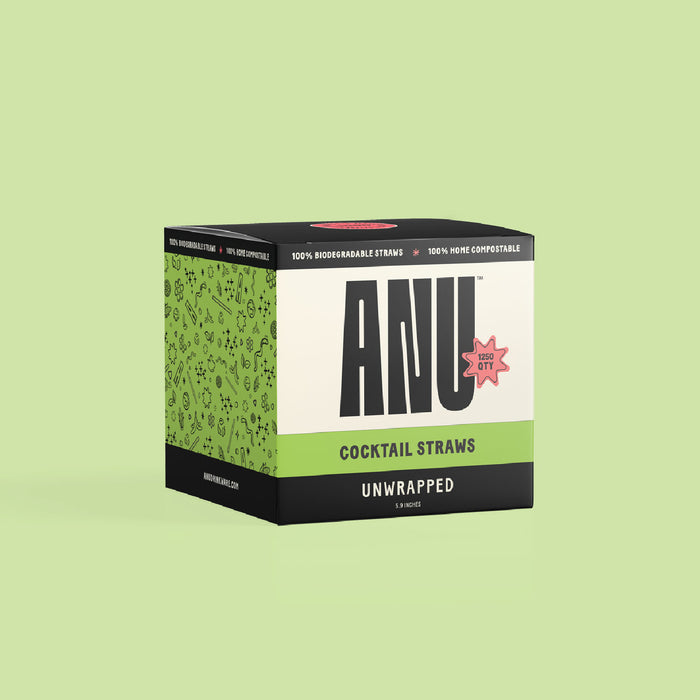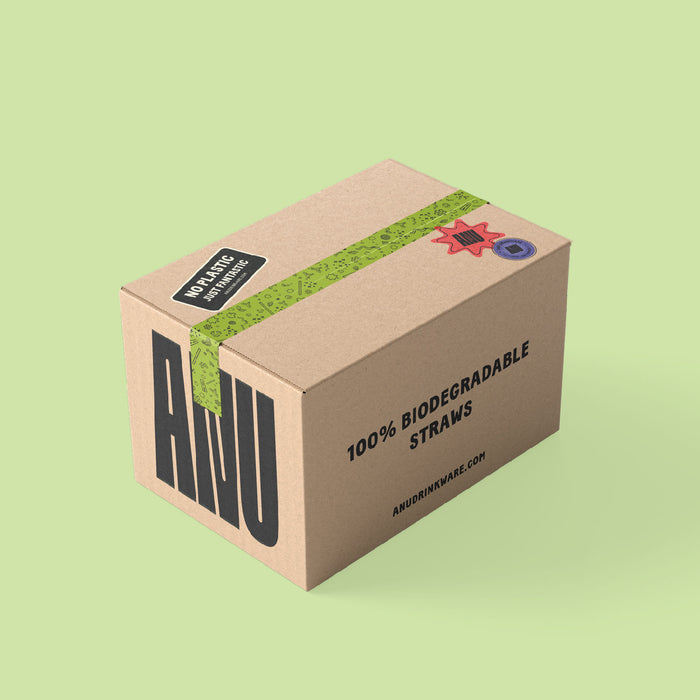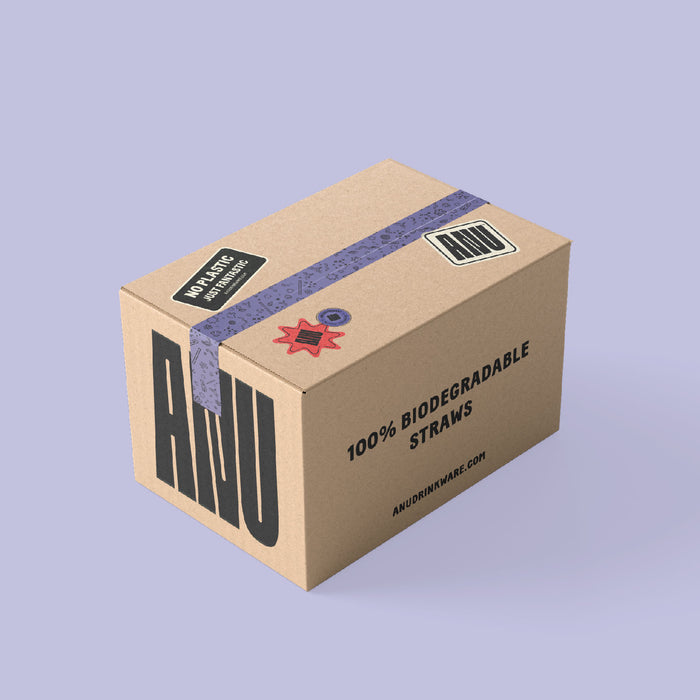

New Waves in Sustainable Food Packaging for 2025
Sustainability is transforming the food packaging industry. As 2025 unfolds, exciting new materials are changing how we package our food. Imagine drinkware and straws that return to the earth without harming it. "No Plastic, Just Fantastic!" is becoming a reality.
Busy individuals and eco-conscious businesses alike are seeking alternatives that align with their values. These new packaging solutions don't just reduce waste—they promote a healthier planet. From biodegradable innovations to smart choices in materials like PHA, the future of food packaging is taking a sustainable turn.
Let's explore these advancements and discover how they can help us live more consciously. Whether you're running a bustling restaurant or simply grabbing a meal on the go, embracing these new waves in packaging can make a significant impact. With clearer options and smarter solutions, the transition to a greener future is easier than ever.
Innovations in Biodegradable Packaging Materials
2025 has welcomed a surge of new biodegradable materials in the food packaging world. These materials are crafted from natural sources that break down easily without leaving harmful residues. One exciting material making waves is polylactic acid (PLA), derived from renewable resources like cornstarch and sugarcane. PLA stands out for its versatility, being used in everything from compostable drinkware to takeout containers.
Another innovative option is molded fiber, which comes from recycled paper and fibers. It's highly popular for food trays and bowls due to its sturdiness and eco-friendly nature. Molded fiber decomposes faster than traditional plastics, reducing environmental footprints.
These materials enhance sustainability by allowing packaging to return to the earth naturally. They help cut down the reliance on fossil fuels, the primary source for non-biodegradable plastics. Transitioning to biodegradable options means less plastic waste clogging landfills and oceans. This not only preserves the planet's beauty but also protects wildlife ecosystems.
Biodegradable packaging solutions are leading a shift in how we think about waste. By incorporating these materials into everyday life, we're taking a significant step toward a cleaner and more sustainable future. "Plant-Based, No Waste."
The Role of PHA in Reducing Plastic Waste
Polyhydroxyalkanoates (PHA) are gaining attention as a superior choice in sustainable packaging. Unlike conventional plastics, PHA is a biopolymer made by microbial fermentation of carbon-rich materials like plant oils. This process results in a material that is completely biodegradable and suitable for various applications, including disposable straws and compostable cocktail straw options.
PHA’s environmental benefits are notable. It decomposes in a matter of months, unlike traditional plastics that linger for centuries. This rapid degradation means less strain on waste management systems and fewer pollutants entering the ecosystem. Since PHA is created from renewable resources, it lessens the demand for petroleum-based plastic production. This attribute makes it a key player in reducing carbon footprints and promoting cleaner industries.
The production of PHA involves cultivating specific bacteria to ferment natural resources, leading to the creation of biopolymers that can be molded into a range of products. Its versatility and eco-friendliness give it an edge over more traditional materials.
Choosing PHA aligns with sustainable packaging goals by offering a reliable alternative to harmful plastics. Transitioning to PHA can significantly reduce plastic waste, presenting us with an opportunity to protect our planet while meeting the needs of consumers who desire eco-friendly choices. "Consciously Convenient."
Tips for Restaurants and Bars to Reduce Single-Use Plastics
Restaurants and bars can play a vital role in reducing plastic waste by switching to sustainable options. Here's how they can effectively minimize their use of single-use plastics:
1. Switch to Compostable Items: Embrace compostable drinkware and cocktail straws. These options break down naturally, reducing the amount of waste sent to landfills.
2. Encourage Reusable Alternatives: Offer discounts for customers who bring their own reusable mugs or cups. Providing incentives can drive more patrons to choose eco-friendly alternatives.
3. Partner with Eco-Friendly Suppliers: Work with suppliers who prioritize sustainable packaging. These partnerships ensure a steady supply of environmentally friendly materials.
4. Educate Staff and Customers: Share the benefits of reducing plastic use with your team and patrons. Knowledgeable staff can advise customers on sustainable choices, enhancing the dining experience.
5. Implement Recycling and Composting: Set up clear and accessible recycling and composting stations. Make it easy for everyone to dispose of waste responsibly.
By adopting these tips, foodservice establishments not only decrease their environmental impact but also align with consumer demands for sustainable practices. "No Plastic, Just Fantastic!"
Supporting Local Economies Through Sustainable Packaging Choices
Choosing locally produced sustainable packaging offers several benefits beyond environmental gains. Supporting local suppliers strengthens the community and promotes regional economic growth. Here's why this approach is invaluable:
- Boosts Local Businesses: Purchasing from nearby manufacturers keeps the money within the community, helping local businesses thrive and creating more job opportunities.
- Reduces Carbon Footprint: Local sourcing means shorter transportation routes, leading to less fuel consumption and a reduction in greenhouse gas emissions. This minimizes environmental impact significantly.
- Ensures Higher Quality Standards: Local producers often adhere to stricter quality and safety standards. Collaborating with these businesses assures better product quality for consumers.
- Fosters Community Collaboration: Establishing relationships with local suppliers builds a network of partnerships. This fosters collaboration and innovation within the community, sparking new ideas in sustainable practices.
By opting for local sustainable packaging, businesses not only enhance their eco-friendly image but also contribute positively to their community. Supporting local choices means investing in a shared greener future. "Consciously Convenient."
Conclusion
The future of food packaging is leaning heavily into sustainability. From innovative biodegradable materials to the use of PHA, the shift is both exciting and necessary. Restaurants and bars play an essential role in this change by reducing single-use plastics and choosing compostable options. Supporting local economies by opting for locally produced packaging further amplifies the impact, benefiting communities and the planet alike.
Embracing these new waves in packaging aligns with the desires of eco-conscious consumers. It's a step toward reducing plastic waste, nurturing the environment, and creating a sustainable industry. The road to a sustainable future is clearer, and the transition is easier than ever with innovative solutions that cater to busy lifestyles.
Ready to join the movement toward sustainable packaging? Check out Anu Drinkware and discover a range of eco-friendly drinkware that align with your values. Let's make a difference together, one conscious choice at a time.



